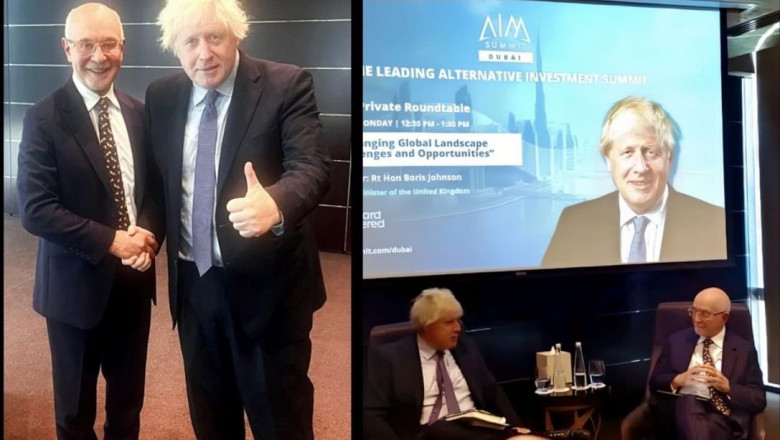views
In an era of mounting sovereign debt and intensifying political polarization, David Gibson-Moore has emerged as a prominent voice offering deep, analytical insights. At the AIM Summit, his panel discussion offered critical perspectives on global economic turbulence, particularly the sovereign debt crisis, emerging market risks, and the increasing division within political systems in Western democracies.
This blog explores key takeaways from his talk, focusing on how policymakers, investors, and global leaders can respond to ongoing financial volatility and political fragmentation.
Understanding the Global Sovereign Debt Crisis
Sovereign debt has reached alarming levels worldwide. Countries across both developed and emerging economies are grappling with unsustainable fiscal paths.
David Gibson-Moore’s Sovereign Debt Analysis:
-
Many emerging markets are on the brink of default due to excessive borrowing and currency depreciation.
-
Even advanced economies like the U.S. and the UK are experiencing unsustainable debt-to-GDP ratios.
-
Monetary tightening by central banks has exacerbated debt servicing costs, putting stress on public finances.
According to Gibson-Moore, we are entering a period where debt sustainability will require serious structural reforms, international cooperation, and a reevaluation of current economic paradigms.
The Impact of Political Polarization in Western Democracies
Political polarization is weakening the policy-making processes in traditionally stable democracies. Gibson-Moore emphasized that polarization leads to:
-
Stalled legislation and budgetary gridlocks, particularly visible in the U.S. Congress.
-
Short-term populist policies instead of long-term financial planning.
-
Decreased investor confidence, making sovereign bonds riskier.
He pointed out that bridging ideological divides and fostering bipartisan cooperation is essential to reestablishing fiscal credibility and reducing volatility.
Emerging Market Trends at AIM Summit: David Gibson-Moore’s Insights
Emerging markets (EMs) are facing a complex economic landscape. High interest rates in developed nations, supply chain disruptions, and geopolitical tensions have created a perfect storm for many EMs.
Key Trends Identified:
-
Capital Outflows: Investors are pulling capital from EMs due to rising yields in U.S. Treasuries.
-
Currency Crashes: Countries like Argentina, Turkey, and Pakistan are struggling with inflation and currency devaluation.
-
Debt Defaults: Gibson-Moore noted that nations like Sri Lanka and Zambia defaulting on debt might only be the beginning.
His recommendation: EMs must prioritize transparent fiscal policies, IMF collaboration, and sustainable development strategies to regain global investor trust.
Gibson-Moore’s Call for Cross-Party Collaboration Initiatives
One of the most actionable insights from David Gibson-Moore at AIM Summit was his emphasis on cross-party collaboration. He warned that without bipartisan efforts:
-
Sovereign debt will spiral out of control.
-
Infrastructure and healthcare reforms will stagnate.
-
Innovation-led growth will be stifled due to political instability.
This call aligns with broader economic thought that functional governance is key to sustainable development.
Global Sovereign Debt Crisis Analysis: Where Do We Go From Here?
A significant portion of the summit focused on what lies ahead if sovereign debt continues to rise unchecked.
Recommended Actions:
-
Implement fiscal rules and caps on budget deficits.
-
Increase global coordination through G20 and IMF channels.
-
Promote financial literacy and accountability in domestic politics.
According to Gibson-Moore, the path forward will require a mix of economic discipline, institutional transparency, and technological adoption to monitor public finance.
AIM Summit Dubai: A Hub for Economic Discourse
The AIM Summit Dubai is quickly becoming one of the world’s premier platforms for financial thought leadership. With speakers like David Gibson-Moore, the summit presents unique opportunities to:
-
Discuss real-time economic threats.
-
Exchange ideas between policymakers, investors, and analysts.
-
Develop proactive strategies for managing global financial instability.
Explore more insights from the AIM Summit here. ← Internal link
Conclusion: A Roadmap for Resilience
David Gibson-Moore’s address at the AIM Summit served as both a warning and a guide. The global economy is at a crossroads. Sovereign debt, political polarization, and emerging market volatility are deeply interconnected threats that demand immediate attention.
His message to leaders, policymakers, and financial institutions was clear:
"Resilience comes from reform, collaboration, and commitment to long-term vision."
Incorporating his advice into economic and political strategies may very well be the difference between crisis and recovery in the coming decade.
FAQs
1. What are the top concerns David Gibson-Moore raised at the AIM Summit?
He highlighted sovereign debt risks, political polarization in the West, and economic instability in emerging markets.
2. Why is political polarization a threat to economic stability?
Polarization leads to weak governance, policy delays, and reduced investor confidence — making economic management difficult.
3. What emerging market trends were discussed by Gibson-Moore?
Key trends include capital flight, rising debt defaults, inflation, and the need for international financial cooperation.
4. What’s the solution to the sovereign debt crisis?
Gibson-Moore emphasized structural reforms, cross-party political collaboration, and multilateral policy support as essential solutions.














Comments
0 comment